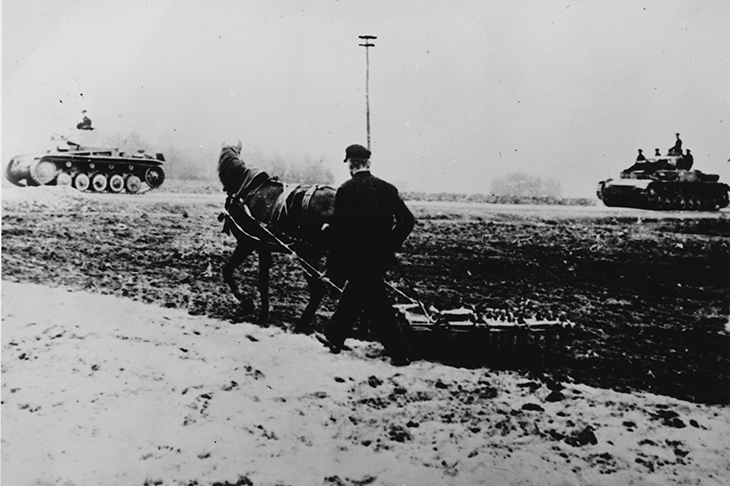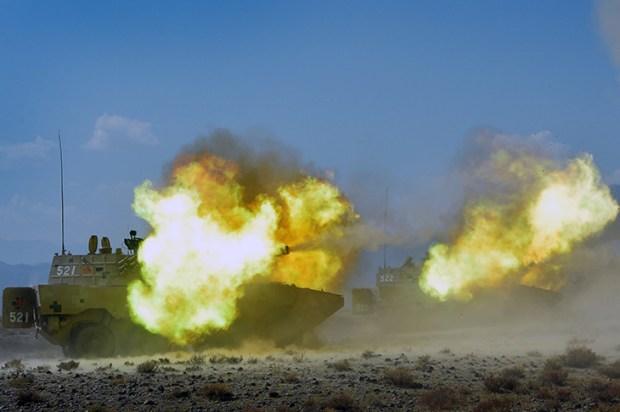‘The victor will never be asked if he told the truth,’ Hitler remarked on the eve of invading Poland in September 1939. Nobody believed his claim that Germany was acting in self-defence; but they did believe his carefully crafted propaganda to the effect that the Poles were so dumb they used cavalry armed with lances against tanks.
In this timely and authoritative book, Roger Moorhouse dispels this and other myths concocted by German and Soviet propaganda. He has trawled through an impressive quantity of unpublished Polish and German sources, as well as a wealth of eyewitness testimonies from both sides, to produce a balanced account of this much neglected yet important episode of the second world war which is both harrowing and inspiring.
There could never have been any doubt as to the outcome. Poland was a poor country, struggling to rebuild a state after more than a century of partition and an economy from the wreckage left by the first world war, in the unpromising climate of the Great Depression. Military spending over the five years prior to 1939 was less than 3 per cent of that of Germany. As Moorhouse points out: ‘The amount that Germany would spend to equip a single armoured division exceeded the entire annual budget for the Polish army.’ Poland’s 700 tanks, all but 100 of them obsolete, were outgunned by Germany’s 3,000, and the 400 or so Polish warplanes were outpaced by the Luftwaffe’s more modern 2,500, a pattern replicated in every field. Poland’s troops were highly motivated, but let down by their commanding officers and hampered by poor communications.
The Germans were able to invade from the north, west and south, which gave them an advantage over Polish forces strung out along this extended border. Believing in the British and French promises to attack Germany from the west, the Polish high command made defence of territory a priority, since it would permit the mobilisation of resources with which to go over to the attack when the time came.
Yet the campaign was no walkover. The first shots were fired by the battleship Schleswig-Holstein at the Polish military depot on Westerplatte, whose 200-strong garrison held on under constant shelling and dive-bombing by Stukas until it ran out of ammunition seven days later. On that first day, despite being taken by surprise, the Polish air force managed to down 40 enemy aircraft at the cost of 29 of their own. North of Warsaw, the German forces invading from East Prussia were given a bloody nose. In the south, General Maczek’s Motorised Cavalry Brigade destroyed more than 60 of the German 18th Corps’ tanks. Polish cavalry, which only fought on horseback against lightly armed infantry, and in one case cavalry, was consistently successful — in a single charge General Anders captured an entire battalion. But neither these nor many other successes could alter the fundamentals.
A distinctive feature of this campaign, and what followed, was its unprecedented barbarity, and Moorhouse rightly devotes much space to the human cost. The Luftwaffe waged a psychological war, by bombing villages and towns that had no military presence or significance, strafing columns of civilian refugees and even peasant women and children working in the fields. The Wehrmacht, in a familiar pattern, destroyed villages it passed through for no apparent reason and exacted drastic reprisals on the civilian population in areas where it met resistance.
There was certainly little gallantry on display. Polish prisoners of war were beaten, sent to perform slave labour or shot. Commanders of units which had put up a stiff fight were penalised for their ‘impudence’ by being shot when they eventually surrendered or, in a few instances, incinerated with flame-throwers. Hitler’s racial views had thoroughly infected the German army, and resistance by Polish ‘sub-humans’ was not considered military virtue, just insolence.
The fate of Warsaw could stand as a symbol for the whole campaign. Bombed heavily from 1 September and besieged on the 8th, it would hold out until the 28th under a hail of artillery fire and dive-bombing. On a single day, 25 September, the city took 560 tonnes of explosives and 72 of incendiaries — more than was dropped on London on any day of the Blitz. The population remained remarkably resilient and even cheerful, actively participating in building defences and tending to the wounded. They could not know what their fate would be after the surrender — that their much-loved mayor and more than 60,000 prominent citizens would be murdered in the initial stages of decapitating Polish society.
Not only did Poland’s western allies fail to honour their pledge to help, they learnt nothing from the events — and the French would be routed the following summer in a shorter space of time than the Poles. The Soviets, who had invaded from the east in collusion with the Germans on 17 September, also learned nothing — and they too would be thrashed in quick time a year after that.
Got something to add? Join the discussion and comment below.
Get 10 issues for just $10
Subscribe to The Spectator Australia today for the next 10 magazine issues, plus full online access, for just $10.
You might disagree with half of it, but you’ll enjoy reading all of it. Try your first month for free, then just $2 a week for the remainder of your first year.














Comments
Don't miss out
Join the conversation with other Spectator Australia readers. Subscribe to leave a comment.
SUBSCRIBEAlready a subscriber? Log in